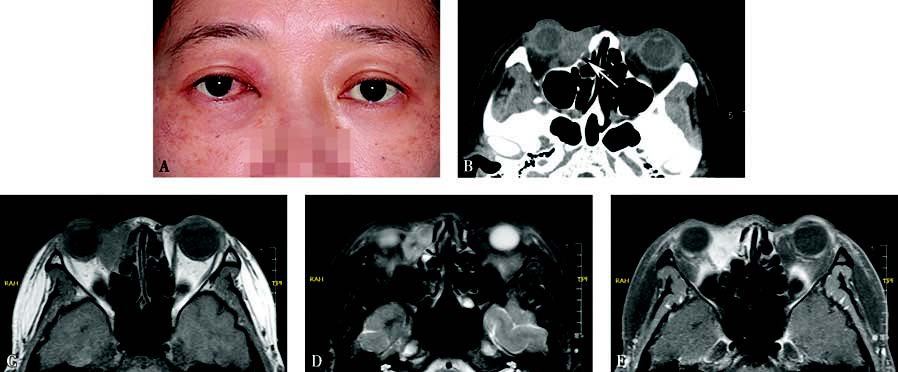Squamous carcinoma of the lacrimal sac is the most common malignant tumor of the lacrimal sac, with an unknown etiology.
Clinical Presentation
The condition is more frequently observed in middle-aged and elderly individuals. In the early stages, it often manifests as epiphora or a mass in the medial canthal region. The tumor exhibits rapid growth and frequently invades nearby structures. Outward invasion may lead to skin ulceration, inward growth may result in proptosis, and nasal cavity involvement can occur. CT imaging shows an irregular mass in the lacrimal sac region with poorly defined margins and significant surrounding bone destruction. MRI reveals tumor invasion into surrounding tissues, with intermediate to low signals on T1-weighted images and inhomogeneous intermediate to high signals on T2-weighted images. The tumor demonstrates significant contrast enhancement. Pathologic examination shows epithelial cells of varying sizes, hexagonal or polygonal in shape, with cellular atypia. The cells display large, hyperchromatic nuclei; eosinophilic cytoplasm; intracellular keratinization; and differentiation that can be well-differentiated, moderately differentiated, or poorly differentiated. Neural invasion may also be observed.

Figure 1 Appearance and imaging of a patient with right lacrimal sac squamous carcinoma
A. The patient presents with epiphora in the right eye, conjunctival congestion, a medial canthal mass, and proptosis.
B. Axial CT shows an irregular mass in the lacrimal sac region with poorly defined margins and significant destruction of surrounding bone (white arrow).
C. Axial T1-weighted MRI shows the tumor with intermediate to low signals.
D. Axial T2-weighted MRI shows the tumor with inhomogeneous intermediate to high signals.
E. Contrast-enhanced axial T1-weighted MRI indicates significant tumor enhancement.
Treatment
The primary treatment method involves local extended excision, followed by postoperative radiotherapy. Chemotherapy or targeted therapy is administered for patients with tumor metastasis.